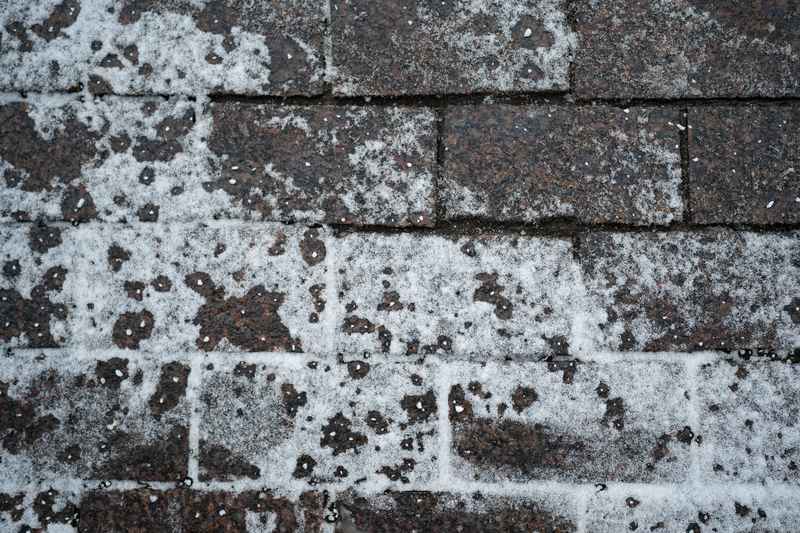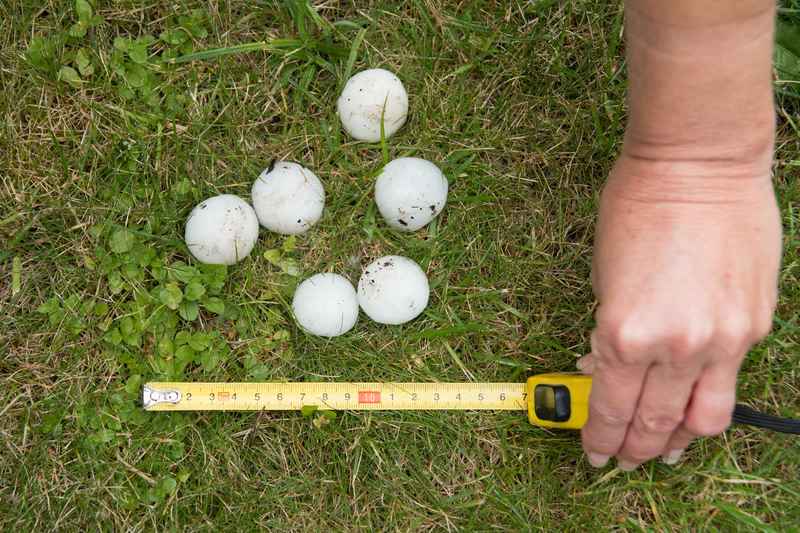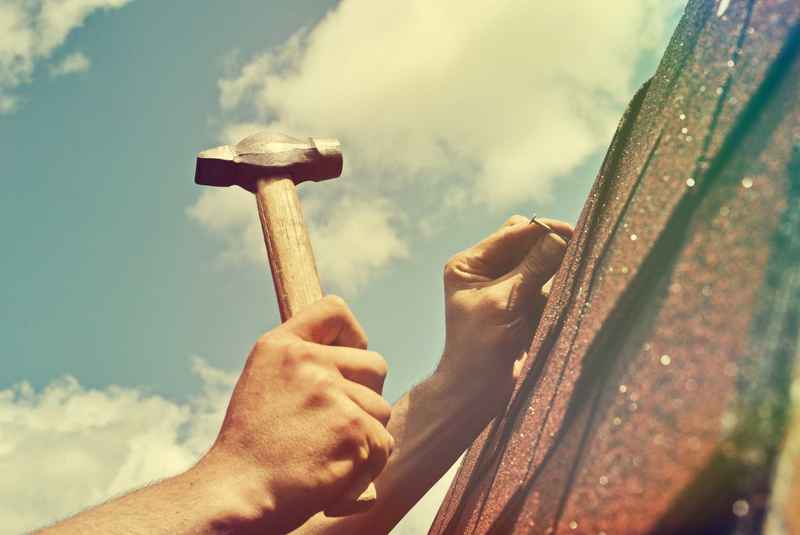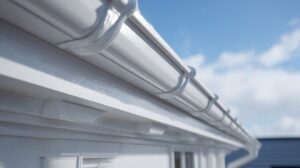Hailstorms can strike unexpectedly, leaving homeowners in Wilmington, grappling with the aftermath of damaged roofs. Imagine waking up to a crackling sound outside, only to find that the beautiful shingles over your head are now peppered with dents and cracks. It’s a frustrating experience, but knowing how to respond can make all the difference.
Understanding Hail Damage on Roofs
Hail damage occurs when ice balls, formed during thunderstorms, collide with your roof at high speeds. These chunks of ice can vary in size, from small pellets to larger stones, and when they come crashing down, they can create significant issues for your roof’s integrity. Most roofs are designed to withstand various weather conditions, but the impact of hail can lead to different types of damage. Cracks, dents, and even missing shingles are common outcomes. Some might wonder, “Is my roof strong enough?” The good news is that many modern roofing materials are engineered to be durable, but no roof is completely impervious to the forces of nature.
Signs of Hail Damage on Your Roof
So, how can you tell if your roof has suffered from hail damage? Look out for these clear signs:
- Dented shingles: If you notice your shingles have small, round dents, it’s a strong indication of hail damage.
- Granule loss: Check your gutters. If they’re filled with granules that look like sand, your shingles are likely losing their protective layer.
- Shingle cracks: Look for any cracks or breaks in the shingles. This type of damage can lead to water leaks.
- Exposed underlayment: If the hail has caused some shingles to break away completely, the underlayment may be visible, indicating urgent repairs are needed.
After a hailstorm, taking a moment to inspect your roof can save you time and money later on. If you’re uncertain, it’s always wise to consult with a professional who can provide a thorough evaluation.
How Hail Affects Different Types of Roofing Materials
Different roofing materials respond uniquely to hail. Understanding how each one fares can help you decide on the best protection for your home:
- Asphalt Shingles: Asphalt Shingles are the most common roofing material and typically handle small hail well. However, larger hail can severely damage them, leading to costly repairs.
- Metal Roofing: Metal roofs are highly durable and often resistant to hail damage. They may dent but won’t crack or break like other materials.
- Tile Roofs: While beautiful, tile roofs can be quite brittle and may crack upon impact, leading to more extensive damage.
- Wood Shakes or Shingles: Wood can absorb impacts differently. It’s susceptible to cracking and splitting, especially if the hail is substantial.
Understanding how your specific roofing material will react to hail can aid in your decision-making for both repairs and future installations. Being proactive can mean the difference between a simple fix and a major renovation.
What to Do When Hail Damages Your Roof in Wilmington DE
The aftermath of a hailstorm can feel overwhelming, but knowing the immediate steps to take can make a world of difference. First, take a deep breath and remain calm. Start by inspecting your property from the ground. Look for any obvious signs of hail damage like missing shingles or debris scattered around.
Next, take pictures! Documenting the damage is crucial for insurance claims and provides a visual record for any contractors you may hire later on. Make sure to capture the roof, gutters, and any surrounding areas that got caught in the storm. A simple smartphone camera will do just fine.
If you’re unsure about climbing onto the roof yourself, consider contacting a roofing professional for a complete assessment. They have the tools and experience to evaluate the damage safely and accurately.
Assessing the Extent of Hail Damage on Your Roof
Once you’ve managed to document the damage, the next step is to assess its extent. This might require professional help, but there are some things you can look for:
- Check for dents and cracks: Look for visible dents or cracks on shingles, especially around the ridges and edges.
- Inspect the gutters: If your gutters are clogged with granules, it might indicate that your shingles are deteriorating.
- Interior signs: Head inside your home and check for water stains or leaks. These can indicate that the roof is compromised.
Understanding the extent of the damage is vital. Small dents might need only minor repairs, while large cracks or missing sections may require a full replacement. Don’t put off this assessment—quick action can prevent further damage and expenses!
Safety Precautions to Consider
Your safety should be a top priority after a hailstorm. Here are some essential precautions to keep in mind:
- Avoid climbing onto the roof: Unless you have the experience and equipment, it’s best to leave roof inspections to the professionals.
- Stay clear of fallen debris: Broken branches, fallen shingles, or damaged gutters can pose safety hazards. Keep kids and pets away from the area.
- Be cautious around power lines: If hail has caused branches to fall onto power lines, report it to the utility company rather than try to clear them yourself.
Prioritizing safety ensures that you and your family stay protected during the recovery process. Always remember: it’s better to err on the side of caution when dealing with potential hazards.
Taking these steps will not only help you manage the aftermath of hail damage more effectively, but it will also pave the way for a smoother recovery process.
Hiring Professionals for Hail Damage Roof Repair in Wilmington DE
Finding the right professionals to repair hail damage on your roof is crucial. You need skilled contractors who know what they’re doing! Start by asking friends, family, or neighbors for recommendations. Personal referrals often lead to trustworthy professionals who have done quality work.
If you can’t find anyone through word of mouth, turn to online reviews and local directories. Websites like Yelp and Angie’s List can help you identify highly-rated roofers in Wilmington. Look for contractors with experience specifically in hail damage repairs, like Best Choice Roofing! This specialized knowledge can make a significant difference in the quality of work you receive.
What to Look for in a Roofing Contractor
Once you have a list of potential contractors, it’s time to narrow it down. Here are some key features to look for:
- Licensing and Insurance: Ensure that the contractor is fully licensed and carries insurance. This protects you from liability should any accidents occur during the repair process.
- Experience: Ask how long the contractor has been in the roofing business, particularly in handling hail damage. A contractor with years of experience will likely have the skills needed to manage any surprises that arise.
- Warranties: Reliable contractors often offer warranties on both materials and labor. A good warranty indicates confidence in their work and can provide peace of mind.
- References: Don’t hesitate to ask for references from past clients. A reputable contractor should have no problem providing you with contact details for people who can vouch for their work.
Questions to Ask Your Roofing Contractor
Before you settle on a contractor, be sure to pose some important questions. Here are a few to consider:
- What is your assessment of the damage? A knowledgeable contractor will provide a clear explanation of the damage and what repairs are necessary.
- How will you handle the insurance claims process? An experienced contractor should be able to guide you or assist with filing the claim, helping to ease your burden.
- What is the timeline for repairs? It’s essential to understand how long the repairs will take and the contractor’s availability to begin the work.
- Will you provide a written estimate? A detailed written estimate protects both you and the contractor from any misunderstandings later on.
Hiring the right professional for hail damage roof repairs is essential for a job well done. Taking the time to research and ask the right questions will help you avoid pitfalls and ensure that your roof is repaired to the highest standard.
With the right team on your side, you’ll soon have your roof back in top shape, ready to withstand whatever Mother Nature throws your way next!
Preventing Future Hail Damage in Wilmington DE
When it comes to keeping your roof in top shape, prevention is key. Regular maintenance can help you avoid the costly repairs that often follow hail damage. Here are some practical tips to ensure your roof is ready for whatever nature throws its way:
- Regular Inspections: Schedule roof inspections at least once a year and after any significant storms. Catching small issues early can prevent bigger problems down the line.
- Keep Gutters Clean: Clogged gutters can trap water and cause damage. Make it a habit to clean your gutters regularly—especially before and after storm season.
- Trim Overhanging Branches: If you have trees near your home, keep their branches trimmed. This not only reduces the chance of branches falling during a storm but also helps prevent debris build-up on your roof.
- Watch for Granule Loss: If you’re finding granules in your gutters or around the base of your home, it may be a sign that your shingles are wearing out and need attention.
By staying proactive about maintenance, you can extend the life of your roof and reduce the likelihood of damage from hail or other severe weather.
Using Protective Measures Against Hail Damage
Even with regular maintenance, it’s wise to consider additional protective measures that can shield your roof from hail damage:
- Impact-Resistant Roofing Materials: If you’re due for a new roof, explore impact-resistant materials designed to withstand hail better. While they may cost more upfront, they can save you money in repairs over time.
- Roofing Underlayment: A quality underlayment can add an extra layer of protection against moisture and damage, particularly if your shingles do get compromised.
- Reinforced Vents and Flashing: Ensuring these elements are durable and storm-resistant can mitigate the risk of leaks caused by hail impacts.
- Consider a Roof Cover: For particularly severe hailstorms, using a temporary cover or tarp on your roof can provide added protection during bad weather.
Implementing these protective measures can help fortify your home against hail damage, giving you greater peace of mind as storms roll through Delaware.
When combining regular maintenance with smart protective strategies, you’ll not only enhance your roof’s durability but also safeguard your investment for years to come. Don’t wait for the next storm to evaluate your options—take action now to keep your home safe and secure!






